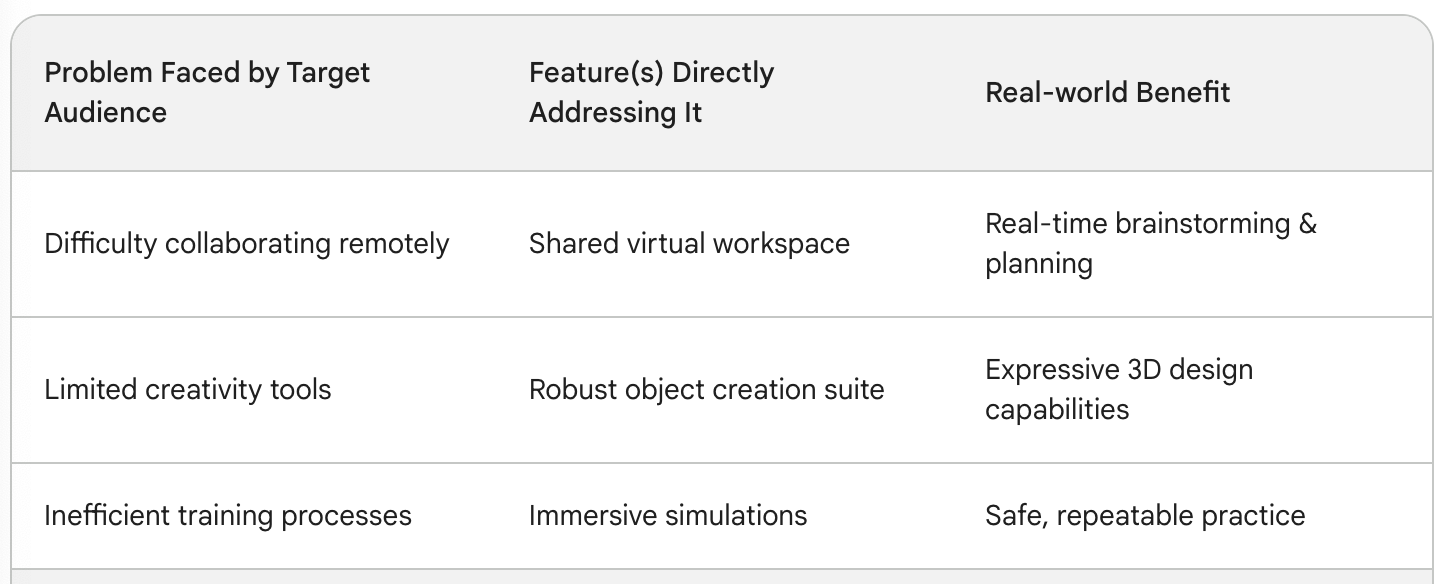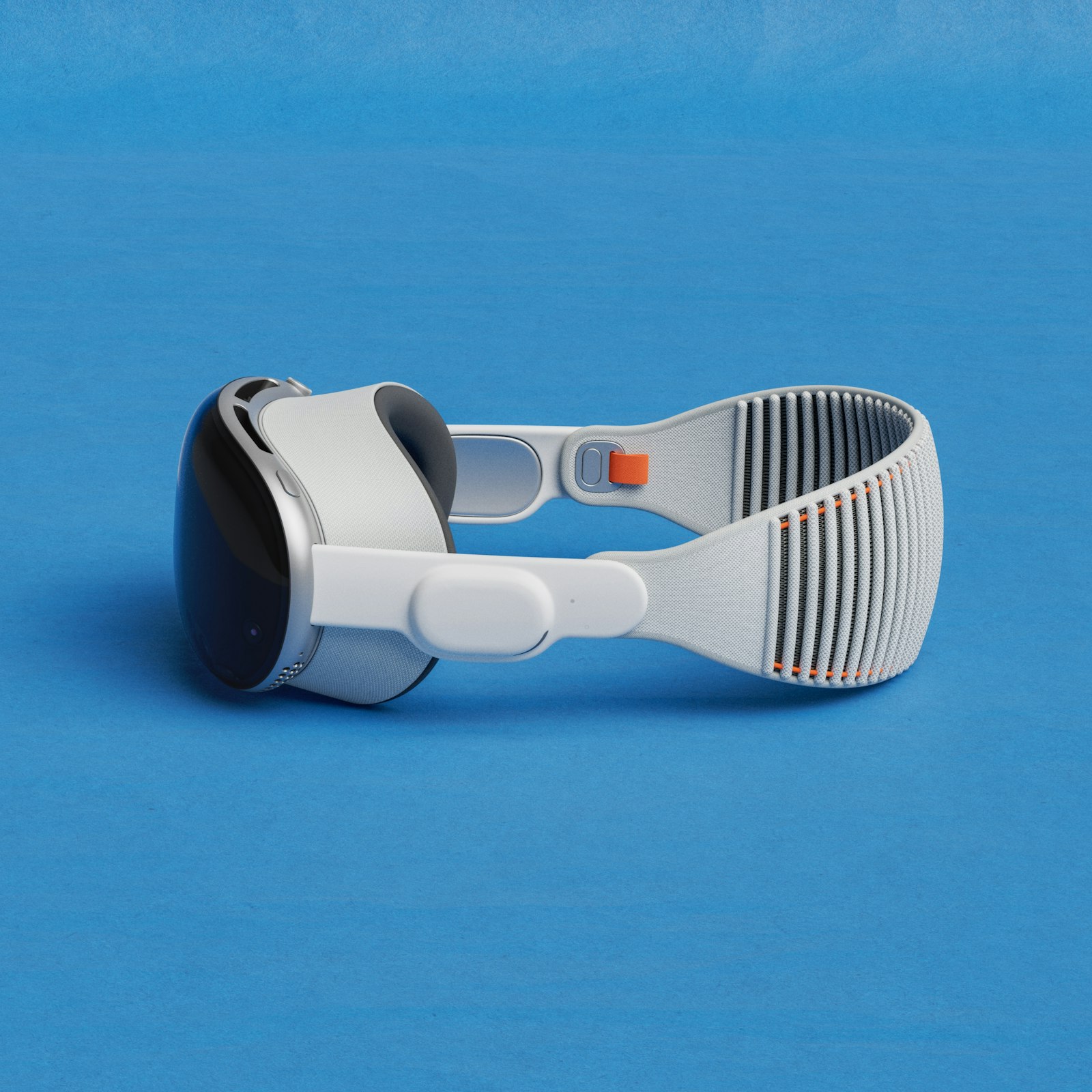You know that feeling when you find a new tool or tech that changes everything? The way you work, the way you play, maybe even the way you see the world? That's how I felt looking at what all Vision Pro can do. It wasn't just cool; it was transformative. I'm guessing Apple's Vision Pro is giving a lot of people that same feeling right now. As marketers, it's our job to harness that excitement and share it strategically.
I'm fascinated by Apple's strategic moves, particularly their entry into the virtual reality market. The Vision Pro isn't just another clunky headset – it's a carefully crafted showcase of Apple's prowess in hardware, software, and intuitive design. As a marketer, there's so much we can glean from how Apple positions this product – lessons that apply directly to how we market VR apps.
Understanding the Vision Pro's Unique Value Proposition
Let's not get too far ahead of ourselves, though. It's essential to have a baseline understanding of the Vision Pro's core features and what sets it apart:
Goodbye, Controllers: Eye tracking, hand gestures, and voice commands replace the need for traditional controllers. This signals that intuitive and natural interfaces are the future of VR. It makes the experience more accessible to the broader market and opens up design possibilities that weren't previously feasible.
Authentication Redefined: Optic ID streamlines logins while enhancing security. Your apps need to align with this emphasis on trust and privacy. Consumer trust is already a challenge within the VR space, and Apple is demonstrating the importance of addressing this head-on.
The Power of Apple Silicon: The M2 and R1 chips enable high-performance VR experiences, setting a new standard for computational power in the space. This means VR experiences can be richer, more detailed, and more capable than ever before, pushing the boundaries of what we thought possible.
Apple's Marketing Approach and Your VR App's Strategy
With that foundation laid, let's dive into how Apple is marketing the Vision Pro and what we can adapt for your own VR apps.
1. Unique Features, Tangible Benefits – It's Not Just the Tech

Apple's not just pushing tech specs. They're demonstrating how the Vision Pro transforms experiences with features like:
The “Infinite Canvas”: Think of it like a limitless virtual whiteboard for brainstorming, project planning, and boundless creativity. This resonates with everyone from designers to productivity aficionados. It's easy to visualize how this concept could replace traditional whiteboards, notetaking, even sketching on paper napkins during a business meeting.
Beyond Passive Media Consumption: No more simply watching content on a flat screen. Imagine attending a live concert with friends, all with the best seats in a virtual stadium designed for an immersive experience. This taps into a desire for social experiences as well as the thrill of feeling like you're truly present at an event, even when physically far away.
For your VR apps, this translates to going beyond abstract features lists and buzzwords. Ask yourself: What real-world problem does my app solve in a way that's fundamentally improved by VR?
- Is it providing immersive training for surgeons that's safer and more accessible than traditional methods? This allows for more repetitions and hands-on experimentation without the risk of real-life consequences.
- Is it a virtual therapy space for mental health professionals? This could offer a more comfortable, controlled environment for certain patients, and potentially increase access to care for those in underserved areas.
Market the benefits, not just the tech. Don't just say “we use VR,” explain the profound difference it makes to the user's experience.
2. Security as a Cornerstone, Not an Afterthought
With Optic ID authentication, Apple sends a clear message: security is paramount. VR, especially in enterprise or sensitive use cases, needs to inspire user trust. For apps that handle personal or professional data, highlighting your security measures becomes a significant selling point. Remember, the VR market is still building trust, so proactive messaging is critical.
Here's a real-world example. Let's say you've developed a VR app for architectural firms that allows collaborative work on 3D models in a shared virtual space. Emphasize and explain:
Encryption protocols: Be specific – what industry-standard encryption do you use?
Secure file transfer mechanisms: How do you protect data during the crucial transfer phase?
Features like multifactor authentication: Show that you're not only aware of best practices, but implementing them.
Frame security as a non-negotiable investment, echoing the sentiment behind Apple's Optic ID. This builds confidence and sets your app apart from competitors who might not prioritize security as visibly.
3. Demo It, Don't Just Describe It
Apple customers can visit their stores and try the Vision Pro firsthand. This level of experiential marketing is key in VR. Here's how to translate this approach:
Short, Shareable “POV” Videos: Show gameplay, app usage, and interface navigation from the user's perspective. Let people virtually step inside the experience.
Interactive Web-Based Demos: If your VR app is on the simpler side, create a 3D web demo to give a taste of the core experience. This removes the barrier of needing a VR headset just to get a sense of your app's potential.
Strategic Partnerships: Are there VR-equipped venues or retailers where potential customers can try your app? Perhaps tech showrooms, gaming lounges, or even industry tradeshows where your target audience already gathers.
4. Content is King (Even in VR)
A dedicated App Store plus compatibility with iPhone/iPad apps mean access to diverse content. This is a significant draw, making the Vision Pro more than a niche device. As VR creators, we need to think about how our apps fit into a larger ecosystem.
Partnerships for Enhanced Value: Could you partner with a VR video content platform for seamless app integration, giving users more reasons to engage? Could you offer cross-platform functionality so users can transition between their phone app and the richer VR experience when they want?
Building your app's place in its content world boosts discoverability and retention. Think of your VR app as one piece of a larger user experience puzzle.
5. Tell Your Story – Craft a Compelling Narrative
Apple knows the power of storytelling. It's not just about the tech; it's about the possibilities it unlocks. Your VR app has a story to tell. Is it about:
Overcoming distance: Whether it's remote teams collaborating more effectively, or loved ones connecting despite geographical barriers. This tackles a fundamental human need for connection.
Creativity: Perhaps it provides a unique medium for artists or designers to express themselves and reach new audiences. Does your app offer creation tools that simply don't exist outside of VR?
Revolutionizing industries: VR training solutions, virtual medical consultations, the applications are broad. Highlight the specific industries you serve and how VR offers advantages over traditional methods.
Craft your marketing around the narrative that will resonate most deeply with your target users.
The Future, Through Apple's Lens
Apple doesn't follow, they lead. With the Vision Pro, they're sending signals about the future of VR marketing and the experiences users will come to expect. Here's what I predict we'll see in the next 2-3 years:
- Elevated standards for design and usability: No more tolerating clunky VR interfaces. VR must become intuitive and accessible to reach mass adoption.
- Prioritized security and trust-building: Especially as adoption rises in sectors handling sensitive data. This will become a non-negotiable aspect of VR marketing.
- New immersive marketing channels: Imagine virtual pop-up shops, live events hosted within VR worlds, the potential is vast. Start brainstorming how you could leverage these emerging formats now, to be an early adopter.
The Vision Pro represents a bold move by Apple, and its success will undoubtedly ripple across the VR landscape. As marketers, keeping a pulse on these developments doesn't just help us promote our existing products; it lets us anticipate and adapt to the exciting frontier ahead.






